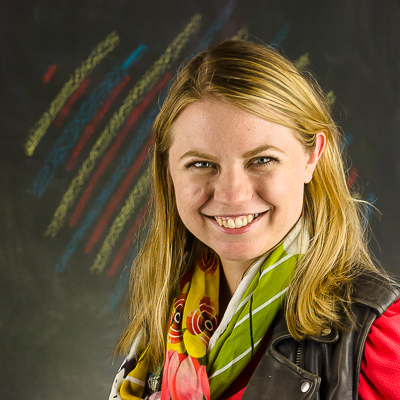Storytelling with Augmented Reality
Augmented Reality allows creators to tell stories in the places where they actually happened. For the purpose of this project, we’ll be working with the concept of physical accessibility on campus. We will use the Unity game engine and a framework developed at Knight Lab so that we can quickly experiment and refine our ideas. We’ll spend some time early in the quarter looking at AR experiences from museums and tourist attractions as well as games like Ingress and Pokemon Go. From there, we’ll build an app and start testing it with users, refining ideas as we go along. We’ll consider the differences between gamified apps that include scavenger hunts or challenges and AR applications that lay out information in a more traditional way.
Faculty and Staff Leads
Project Details
2019 Winter
Iterative Story Design
Description
This project will build on the work of the Location Based Storytelling Studio group from Fall 18 which produced and ran an initial play-test for an AR game about climate change. During Winter 19, we will continue play-testing and refining the game while gathering feedback from players through surveys and interviews. Can playing a game really impact attitudes about climate change? Which is more impactful--a game designed for “fun” or a game that’s more transparent about its educational goals?
Important Questions
- How do you design a game with the intention of maximizing a learning outcome or incentivizing behavior change?
- What’s the right relationship of irl time to in game time?
- How do people behave while playing large scale location based games?
- What is “balance” in a game and how do you design for it?
- What motivates continued play?
Sample Milestones
- Week 1-2 Getting up to speed and study design. Students new to the project will play around with the game and we’ll go through the feedback from the first playtest. We’ll then decide on hypotheses for the second playtest and a time frame, sample size and research methods. We will consider deploying fairly small design tweaks during this phase.
- Week 3-4 Initial playtest. Students will gather a diverse sample of players and conduct surveys and interviews before during and after gameplay.
- Week 5-6 Synthesis and design refinement. Students will gather the results of the initial playtest and produce a plan for any changes to both the game and the research methods that need to be made (midterm presentation). We’ll implement changes and begin a new testing cycle.
- Week 7-8 Second test and final presentation. Class will probably end midway through the second playtest but we think that’s ok.
Outcome
A new refined and playable version of the game, a presentation of “lessons learned”.
Students
2018 Fall
Location-based Storytelling with Augmented Reality
Description
Alexa, Siri, Google Home, Cortana—smart speakers and agents are now used by about 20% of US homes. People use them to ask about weather, set timers, play games, get information, or listen to the news. But are these devices delivering high-quality news and information or could they be misinforming and sharing “junk” news? This project aims to find out. By developing an audit method that defines what queries to audit and systematically collects data on the results over time for those queries from several different smart speakers, the project will allow for an assessment and comparison of news quality from these different devices.
Important Questions
- How might location based storytelling encourage audiences to engage with information they might otherwise overlook? How can location based experiences be used to drive narrative?
- What stories and datasets best lend themselves to being presented in this way?
- How does the way audiences engage with gamified experiences differ from more didactic ones?
Sample Milestones
- Build context on informational AR apps. Get outside examining Ingress and Pokemon Go. Document effective UX techniques, methods of onboarding, retention and gamification.
- Build paper prototypes presenting informational and gamified AR app concepts.
- Build and deploy an early iteration of the app to phones.
- Test app with users in the field, refine, iterate and document.
Outcome
Students will thoroughly explore location based storytelling and build an informational AR app for Android and iOS. They will gain experience in design research and storytelling and exposure to computer vision toolkits and the Unity game engine.
Links
- White Paper | The (Sometimes Dumb) Wisdom of Crowds: Experience Design and Augmented Reality in a Post-Pokémon Go World
- Location Based Storytelling in the Urban Environment
- Is Augmented Reality the Future of Brand Storytelling?
- Using augmented reality technology in storytelling activities: examining elementary students’ narrative skill and creativity
- Unity at GDC - Introduction to AR using Vuforia in Unity




-lee/400.jpg)